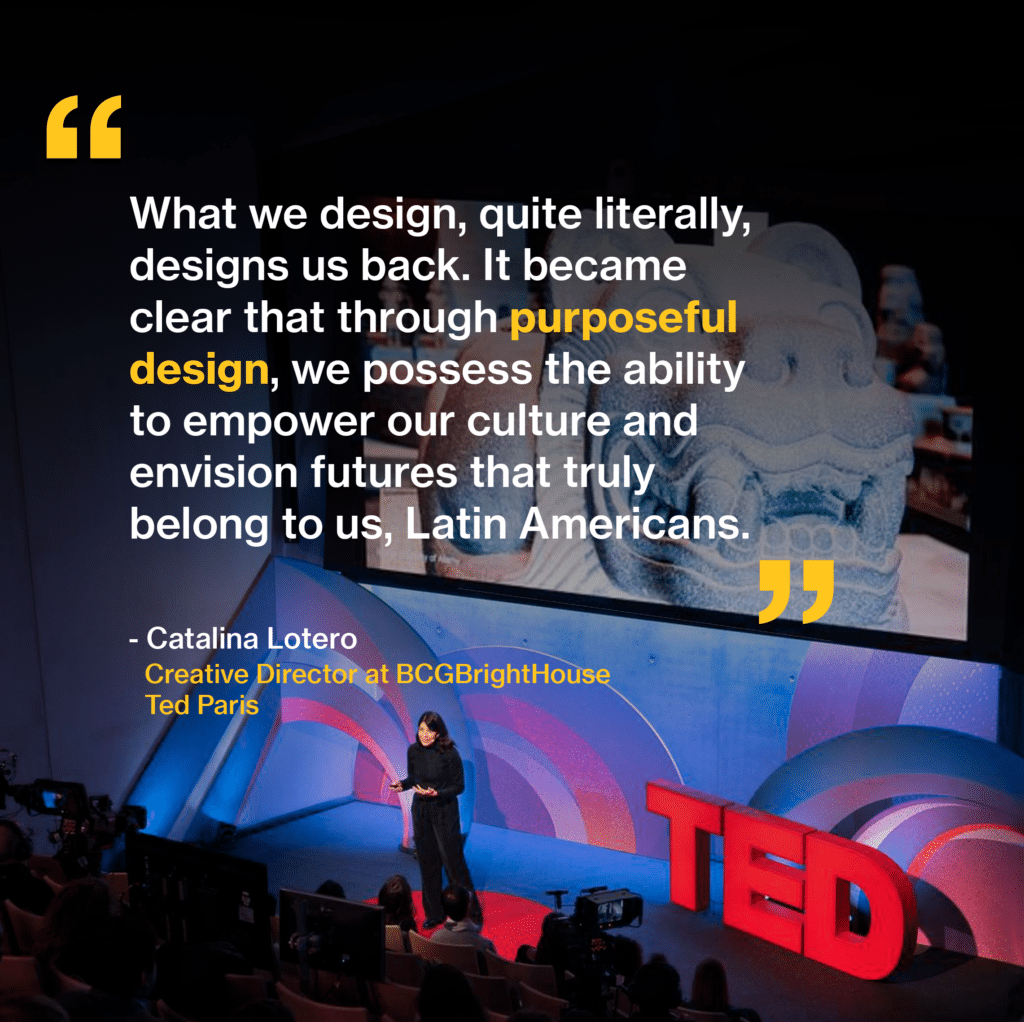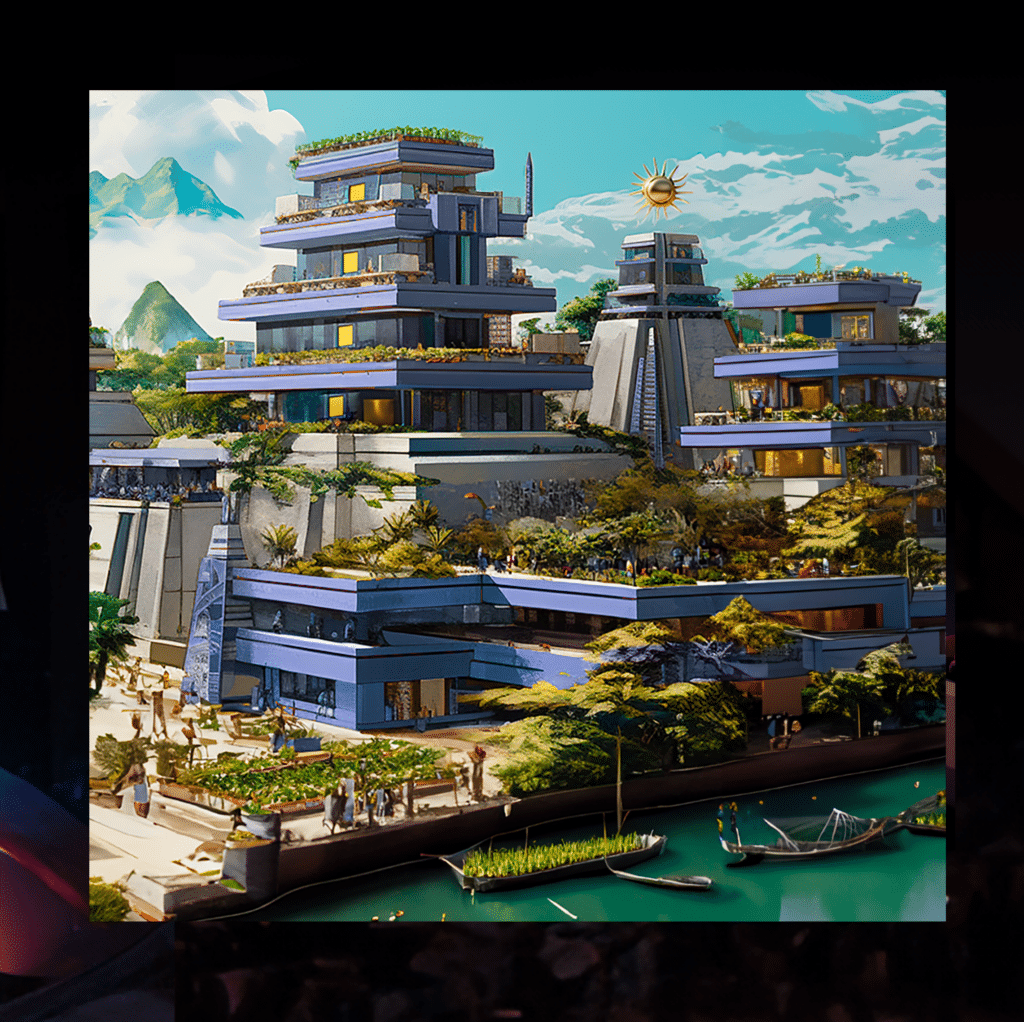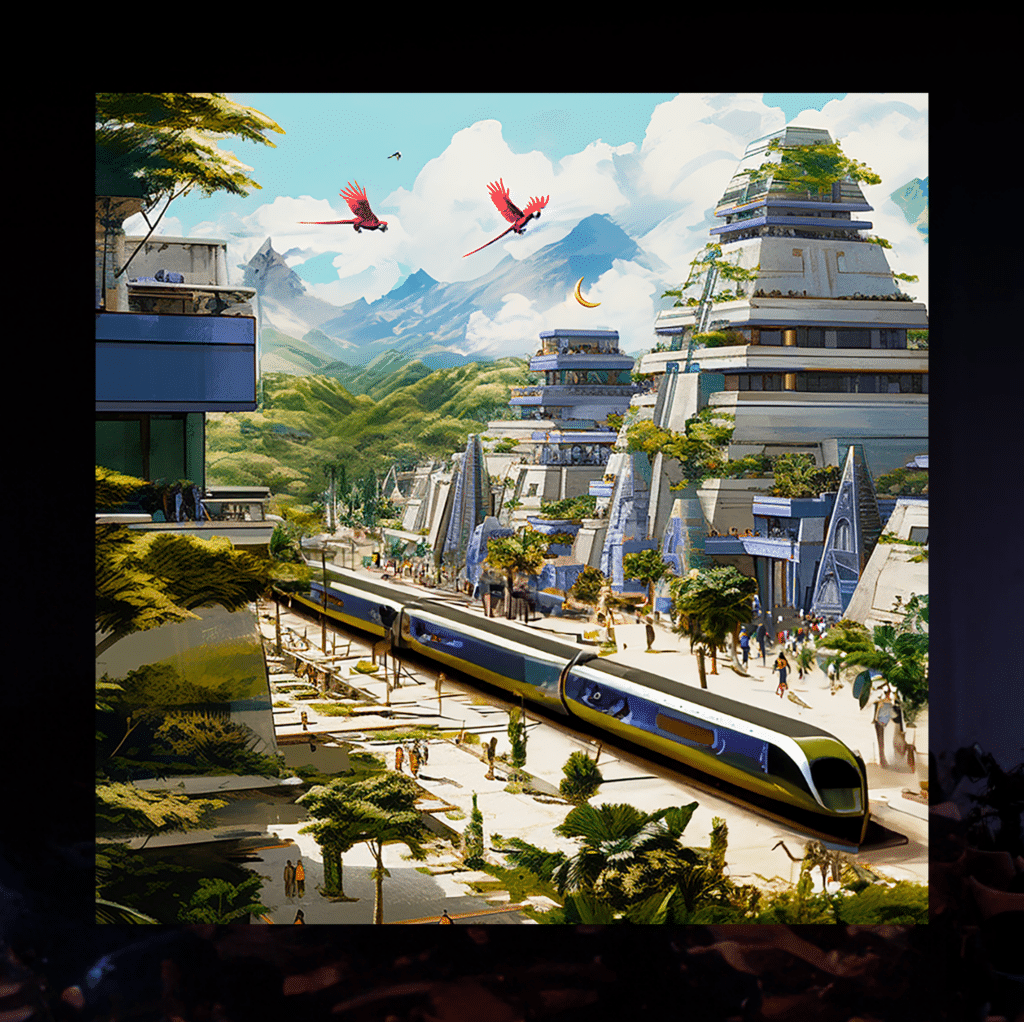In her compelling TED Talk, Catalina Lotero, a Creative Director at BCG BrightHouse, shares how her unique perception of the world catalyzed the concept she calls “Pre-Columbian Futurism.” Catalina’s journey began with what she describes as “aesthetic anxiety,” a deep sensitivity to visual inconsistencies, which she views as an asset rather than a discomfort. This cognitive diversity has become a pivotal force in her efforts to understand and enhance her surroundings, constantly prompting her to uncover broader cultural significances and connections. It enables her to ask questions to learn the greater cultural why and to find patterns to connect us.
A notable example of her approach is her past academic focus at Keio University in Tokyo, where she explored traditional Japanese aesthetics as expressions of nationalism and cultural preservation. Over the course of her five-year tenure, Catalina found herself constantly encountering traditional Japanese design and the ways in which it was integrated into the aesthetics of contemporary daily life, both professional and personal contexts. Her observations, especially of the tatami room, ignited a fervent inquiry into the lack of analogous enduring traditions in Latin American culture, a gap largely due to the devastating effects of colonization, which had erased vital indigenous knowledge and cultural practices.
In reaction, Catalina pioneered “Pre-Columbian Futurism,” a speculative design initiative that envisions Latin American culture unfettered by colonial influence. Her research into civilizations like the Aztecs, Mayans, and Incas inspired her to adopt specific design elements – color schemes, geometric patterns, and symbolic motifs, such as the divine jaguar – to channel their historical power and utility. Catalina’s innovative adaptation of the jaguar symbol into an AI-enhanced does the modern work of answering calls and the ancient work of interpreting dreams, exemplifying Pre-Columbian Futurism’s aim to fuse tradition and modern technology.
As Catalina delved deeper into this study and craft, she found that she was joining a much broader movement of Latin American cultural revival and futurism, aligning with innovators such as Chef Charles Michel, who revitalizes ancient Latin American foods like coca and cacao; Vanessa Gomez, a conceptual artist who modernizes traditional textile techniques; visual artist and art director Orly Anan, who merges pre-Columbian symbols with contemporary pop culture in visual art; Lisette Correa, a visual artist who makes indigenous narratives accessible through vibrant graffiti; and architect Freddie Mamani, who incorporates Aymara motifs into futuristic building designs.

Pre-Columbian Futurism, as envisioned by Catalina, not only bridges historical divides but also reconstructs a vanished heritage and reestablishes the visual continuity that her aesthetic anxiety seeks to resolve. Congratulations to Catalina for harnessing her distinctive outlook to enlighten and inspire, and to the Pre-Columbian Futurist community for crafting a new visual language for Latin America that profoundly impacts our understanding of identity and belonging.


